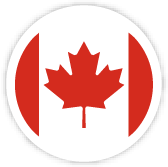This week’s market events:
Stay informed and prepared with the following updates

USD ISM Services PMI(Jan):
The Institute for Supply Management’s (ISM) Services Purchasing Managers Index (PMI) reveals the current conditions in the US service sector, which has historically been a large GDP contributor. A print above 50 shows expansion in the service sector’s economic activity. Stronger-than-expected readings usually help the USD gather strength against its rivals. In addition to the headline PMI, the Employment Index and the Prices Paid Index numbers are also watched closely by investors as they provide useful insights regarding the state of the labour market and inflation.

NZD Unemployment Rate(Q4):
The Unemployment Rate released by Statistics New Zealand is the percentage of unemployed workers in the total civilian labor force. If the rate goes up, it indicates a lack of expansion within the New Zealand labor market and weakness in the New Zealand economy. Generally, a decrease in the figure is seen as bullish for the New Zealand Dollar (NZD), while an increase is seen as negative bearish.

EUR Retail Sales (YoY)(Dec):
The Retail Sales released by the Eurostat is a measure of changes in sales of the Euro zone retail sector. It shows the performance of the retail sector in the short term. Percent changes reflect the rate of changes of such sales. The changes are widely followed as an indicator of consumer spending. Usually, the positive economic growth anticipates “Bullish” for the EUR, while a low reading is seen as negative, or bearish, for the EUR.

CAD Unemployment Rate(Jan):
The Unemployment Rate, released by Statistics Canada, is the number of unemployed workers divided by the total civilian labor force as a percentage. It is a leading indicator for the Canadian Economy. If the rate is up, it indicates a lack of expansion within the Canadian labor market and a weakening of the Canadian economy. Generally, a decrease of the figure is seen as bullish for the Canadian Dollar (CAD), while an increase is seen as bearish.







